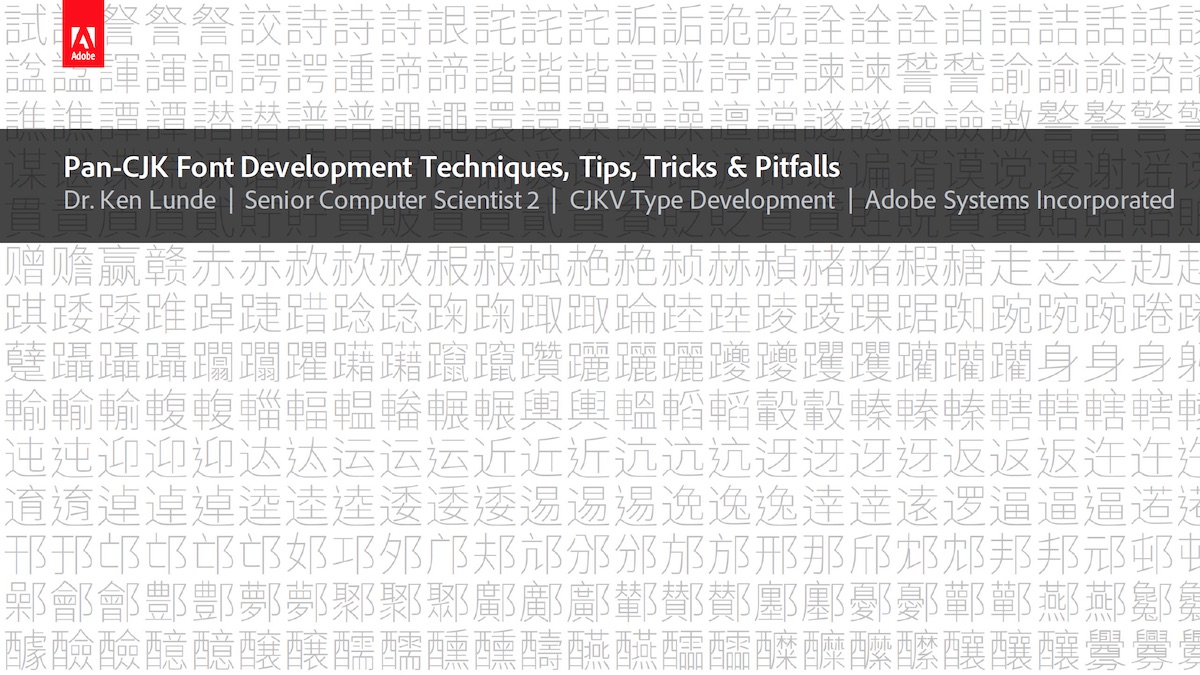
I am scheduled to present at IUC39 (The 39th Internationalization & Unicode Conference) in late October, and the title of my presentation is Pan-CJK Font Development Techniques, Tips, Tricks & Pitfalls. While the related presentations that I delivered at IUC38 last November focused on actual Source Han Sans and Noto Sans CJK development details, this presentation will be more general, and will instead focus more on techniques and best practices when developing large multilingual fonts, drawing on the experience of developing and deploying those two joined-at-the-hip typeface families when necessary.
I am currently dealing with properly categorizing the various tidbits of the presentation as Techniques, Tips, Tricks, or Pitfalls. I decided to combine Tips and Tricks into the single category Tips & Tricks, because they’re roughly the same, but mainly because I found an excellent image that conveys the meaning of tricks. ☺
Anyway, I still have a lot of work left to do on this presentation, but at least I have another two months to complete it.
As I may have mentioned in past articles, the benefits of this conference go beyond the scheduled presentations, and much of the value is the golden opportunity for face-to-face interaction with developers who are involved in the development of Unicode, or who are working with Unicode on a daily basis.
For those who are planning to attend IUC39, I look forward to meeting you there. 🍷










